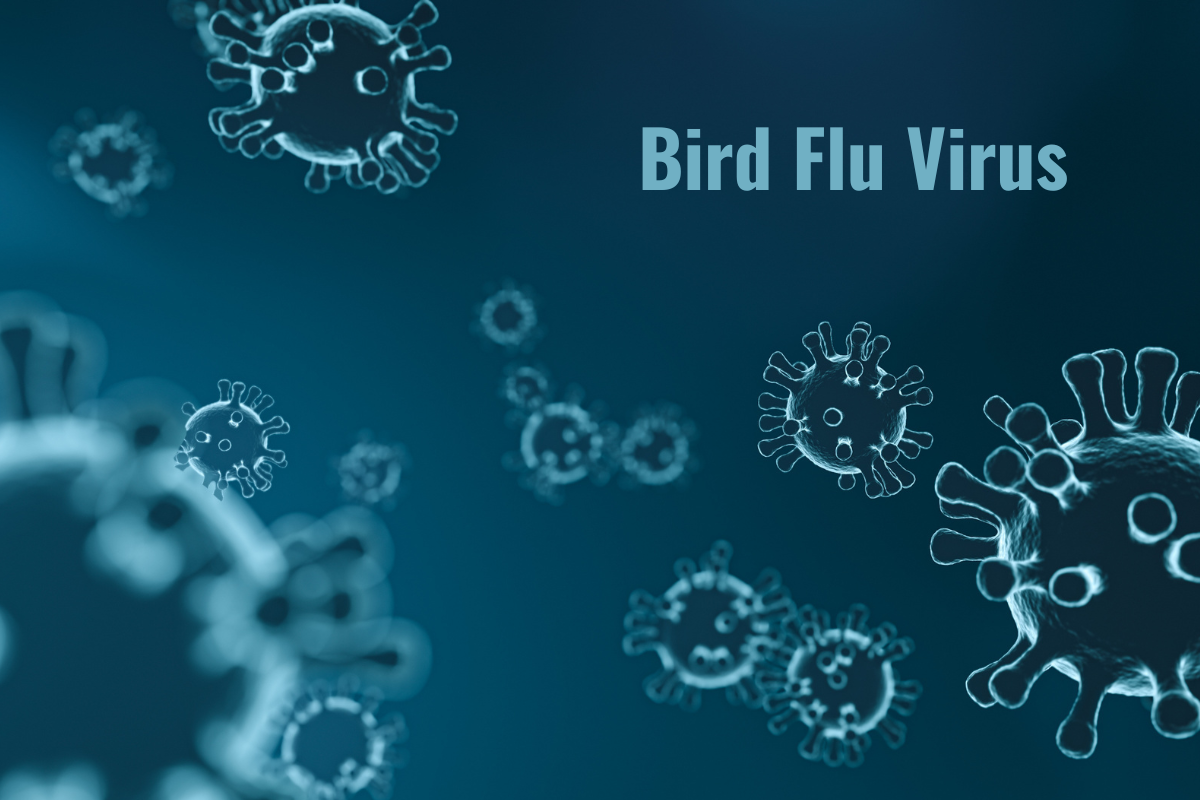The bird flu virus, or avian influenza, is an illness that mainly affects birds but can sometimes spread to humans and other animals. The H5N1 strain of the virus has been the most worrying in recent years because it can sometimes spread from birds to people. Recently, there have been some new updates about the bird flu virus that have made experts very concerned. Some recent mutations in the virus may make it more likely for humans to contract it. Two severe cases have been reported, which has caused even more worry about how the virus might change in the future.
In this article, we will discuss how the virus works, what the recent changes mean for human health, and what is being done to prevent its spread.
What Is the Bird Flu Virus?
The bird flu virus is a sickness that usually affects birds but can also spread to humans and other animals. The virus is mostly found in poultry, like chickens and ducks, and can spread quickly among birds. The strain that has caused the most problems for humans is called H5N1. It is a dangerous virus for people because it has a high death rate, especially for those who have close contact with infected birds. The virus mainly affects the lungs and breathing system, causing symptoms like fever, sore throat, cough, and trouble breathing. If the infection is severe, it can lead to pneumonia, organ failure, and death.
While bird flu mostly affects birds, there are some cases where the virus jumps from birds to humans. This doesn’t happen often, but when it does, it can be very serious. The virus can spread from birds to humans through contact with infected birds, their droppings, or their saliva. In rare cases, the virus can also spread from one person to another.
The Mutation of the Bird Flu Virus: A New Development
Lately, the bird flu virus has been changing in a way that could make it easier for humans to catch. Experts discovered that the virus has mutated, meaning it has changed its structure. This change could allow the virus to spread more easily between humans. The mutation was found in two severe human cases in the United States and Canada.
The mutated virus can now attach more easily to the cells in the upper part of the human airway, which includes the nose and throat. This is a big change from earlier versions of the virus, which mostly affected the lower respiratory system, such as the lungs. This mutation could make the virus spread more easily from person to person through coughing or sneezing, just like the flu or the common cold. Although the virus is still not very easy to spread from human to human, scientists are worried that the virus could keep changing and become more contagious over time.
Two Severe Human Cases of Bird Flu Virus: What Happened?
Two cases of severe bird flu virus were recently reported in the United States and Canada. These cases were very important because they showed that the virus might be mutating in ways that make it easier for humans to catch. In both cases, the patients were exposed to infected birds before they got sick. Both individuals became seriously ill and needed hospital treatment.
The doctors and experts who studied these cases found that the virus had mutated, allowing it to bind more easily to human cells in the upper respiratory tract. This is different from how the virus worked before. Previously, the virus mainly infected the lower respiratory system, which made it harder to spread from person to person. But with this new mutation, the virus may now be able to spread more easily through coughing, sneezing, or close contact.
Both patients had other health problems, which made it harder for them to fight off the virus. Fortunately, no widespread human-to-human transmission has been seen yet, but experts are keeping a close eye on how the virus is changing.
Why Are These Mutations of the Bird Flu Virus So Concerning?
The main reason these mutations are worrying is that they could make the virus easier to spread between humans. Although the bird flu virus has spread from birds to people in the past, it has not been very good at spreading from one person to another. If the virus keeps mutating, it could eventually become easy for humans to spread it to each other, just like the regular flu.
A more contagious bird flu virus could cause a lot of problems. The bird flu virus, especially the H5N1 strain, has a high death rate in humans, meaning it could be very dangerous if it spreads more easily. While the virus has not yet become a major threat to human health, the possibility of it changing to become more contagious is a serious concern.
Health experts are carefully watching how the virus evolves. They are worried that if the virus keeps changing, it could eventually lead to a global outbreak, something like a pandemic. If that happens, it could cause a lot of illness and death. Experts are doing everything they can to understand how the virus might change and what could be done to stop it.
How the Bird Flu Virus Spreads
The bird flu virus mostly spreads through contact with infected birds or their droppings. People who work with poultry or have close contact with sick birds are at higher risk of contracting the virus. The virus can also spread through places where infected birds have been, like farms or markets. It spreads when a person touches something contaminated with the virus, like a bird or bird droppings, and then touches their face, eyes, nose, or mouth.
Once the virus enters the human body, it mostly affects the lungs and breathing system. This can cause fever, cough, sore throat, and difficulty breathing. In serious cases, the virus can lead to pneumonia, an infection of the lungs, and can cause other serious health problems, including organ failure and death.
Though the spread of the virus from human to human is not very common, it can happen, especially when people are very close to each other. Experts are worried that the bird flu virus could evolve and spread more easily between humans, increasing the risk of a pandemic.
The Risk of a Global Pandemic
Although bird flu has not caused a global pandemic yet, there is still a real risk. The virus has spread in small outbreaks in different parts of the world, including parts of Asia, Europe, and North America. These outbreaks are usually limited to birds or people who work with birds, but experts worry that things could change.
If the bird flu virus mutates to become easily transmissible from one person to another, it could lead to a large outbreak or even a pandemic. The H5N1 strain of the virus has already caused many deaths among people who were exposed to infected birds, but if the virus became easier to spread between people, it could be much more dangerous.
Health experts are currently monitoring the virus closely. They are studying how it is changing and trying to predict what might happen in the future. The goal is to prevent the virus from spreading too widely, especially to people.
What Can Be Done to Prevent the Spread of the Bird Flu Virus?
There are several ways to reduce the risk of contracting or spreading the bird flu virus. The most important is to detect the virus early, especially in birds. If the virus is found early, it can be stopped before it spreads too far. Health experts also recommend that people who work with birds take extra precautions to avoid exposure to the virus.
Workers in poultry farms or markets should wear protective clothing, gloves, and masks to avoid contact with infected birds. They should also wash their hands often and avoid touching their faces after handling birds or anything that could be contaminated with the virus.
If an outbreak is detected, health authorities may cull or kill infected birds to stop the virus from spreading. This has been a common way to stop bird flu outbreaks in the past. People who live in areas with bird flu outbreaks should also avoid close contact with birds, especially those that appear sick.
In some cases, vaccines and antiviral medications are used to prevent or treat the virus. Scientists are working on developing better vaccines to protect both humans and animals in case the virus spreads further.



